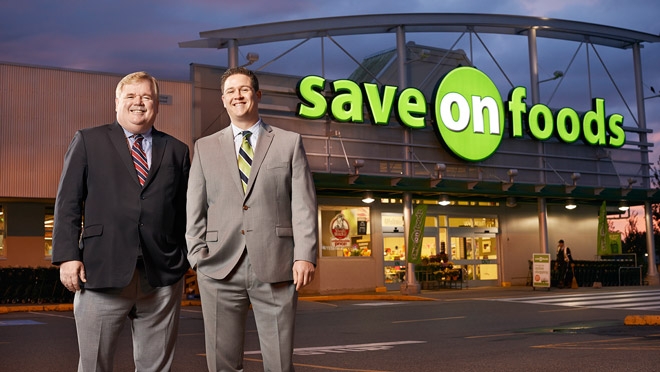
Features
Overwaitea finds $11.2 million in savings through energy efficiency
March 16, 2015 – There are few energy efficiency challenges as tricky as those routinely faced by grocers.
March 16, 2015 By BC Hydro

Some food items must be kept consistently cool—or frozen—to avoid spoilage. Others are cooked and maintained at high temperatures to be sold ready to eat. Customers want uniform levels of lighting as they browse the aisles, and don’t want to be uncomfortable in a store that is either too warm or too cold.
It’s a recipe for high-energy consumption. But that also means great opportunities for efficiency.
“Grocery provides a unique opportunity for energy savings,” explains Kerry Fast, senior key account manager for BC Hydro, who works with large grocery clients such as Overwaitea. “When you look at lighting, heating, ventilation, air conditioning (HVAC), and refrigeration, efficiencies can be found to manage up to 80% of a store’s electrical load.”
$11.2 million saved through low-heat lighting, ‘de-lamping,’ heat recovery and more
Overwaitea Food Group (OFG) has been a Power Smart Partner since 2002. The company’s energy manager, Cole Munro, is constantly on the hunt for energy savings. With his team, Munro evaluates OFG locations from top to bottom, looking for lighting, refrigeration, HVAC and mechanical upgrades that can be made.
They examine how repairs and maintenance are being conducted, and consider whether equipment that’s due for replacement can be swapped out for more energy-efficient models.
Some of the ways Overwaitea has found savings include:
• Moving from open refrigerated displays to energy-efficient display cases fronted by glass doors. Munro says there were initial concerns that adding doors might make products less visible or create difficulty when stocking shelves. But what they’ve found is that there have been few problems, and tremendous energy and financial savings.
• Retrofitting refrigerated display cases to incorporate energy-efficient lighting, which generates less heat. That means the refrigeration system doesn’t have to work as hard.
• Heat recovery systems at warehouses capture waste heat generated by the refrigeration process. The energy is sent from condensers on the roof, through a heat exchanger, and then pumped back into the building, resulting in large-scale financial savings.
• “De-lamping” — removing lights that are not needed. They’re also automating the process of turning lights on and off by using daylight and occupancy sensors.
• New stores are planned and built following energy-efficiency standards.
The measures have made a difference: since 2007, OFG says it has reduced total electricity consumption by 22%. The company has avoided using 254 GWh of energy, resulting in cost savings of $11.2 million. That’s also helped reduce carbon emissions. OFG says it has avoided 87,000 tonnes of CO2 emissions, equivalent to removing 17,000 cars from the road.
Munro says OFG has had significant success in part because senior levels of management support the idea of reducing costs and energy consumption. It’s a trend that’s continuing under new OFG president Darrell Jones.
Overwaitea’s leadership sets example for grocery sector
Jonathan Farkouh, manager of member programs for the Retail Council of Canada, says while energy efficient upgrades can be capital-intensive to roll out initially, the investment will pay off. OFG’s leadership on these kinds of upgrades is showing other grocers that it makes sense in the long run to pursue energy conservation.
“Upgrading your lighting, adopting retrofitted coolers and refrigeration to reduce compressor run times, and adapting building systems when possible to reduce heating and cooling will mean major savings,” says Farkouh. “Continuing to track usage, research newer technology, and refining your systems means that you will keep seeing savings in the years to come.”
PHOTO: President Darrell Jones (left) and energy manager Cole Munro of Overwaitea Food Group. (Photo BC Hydro)
Print this page